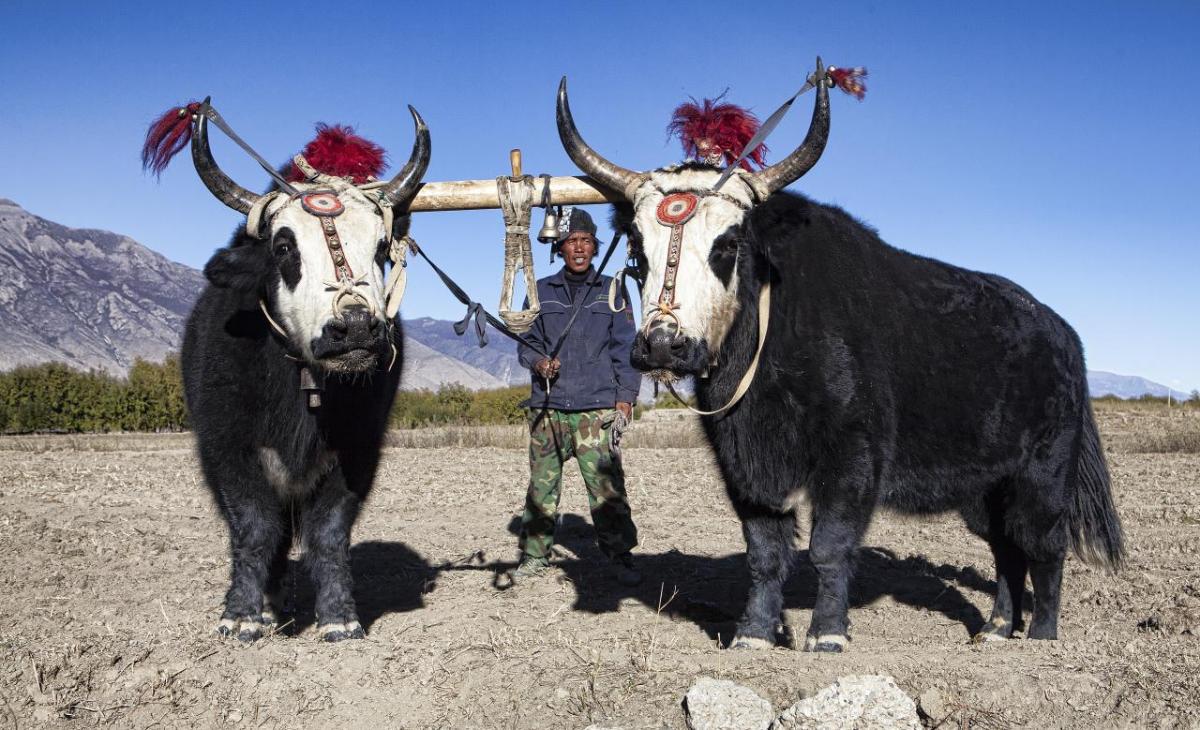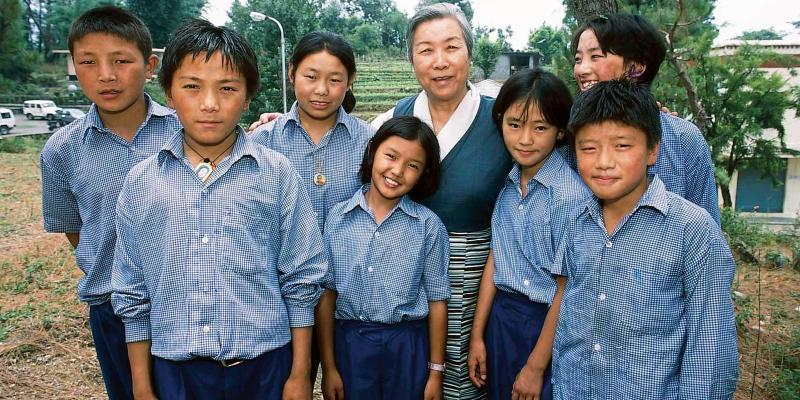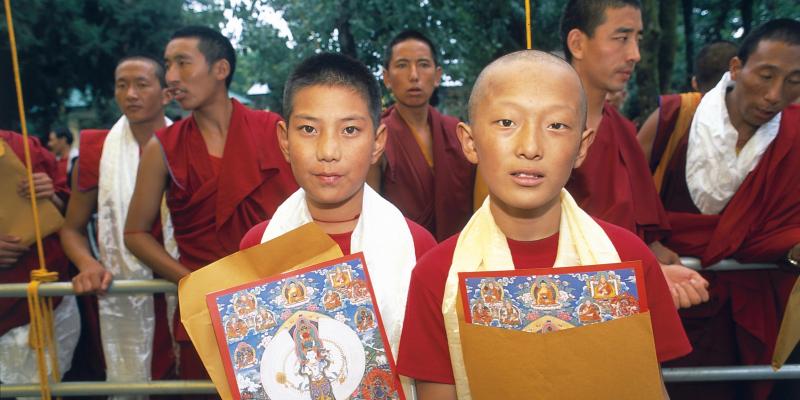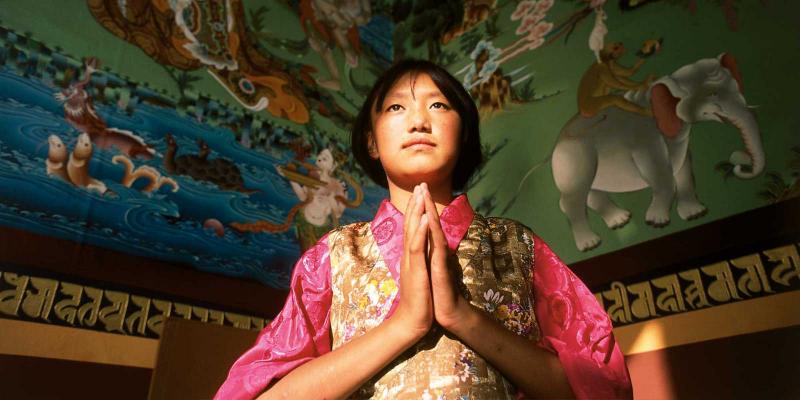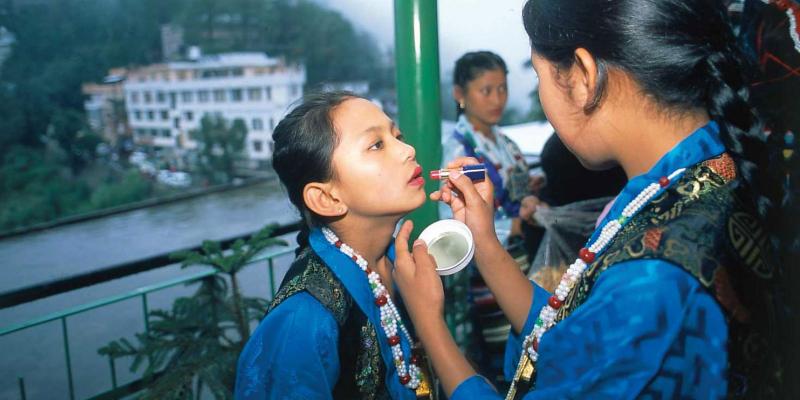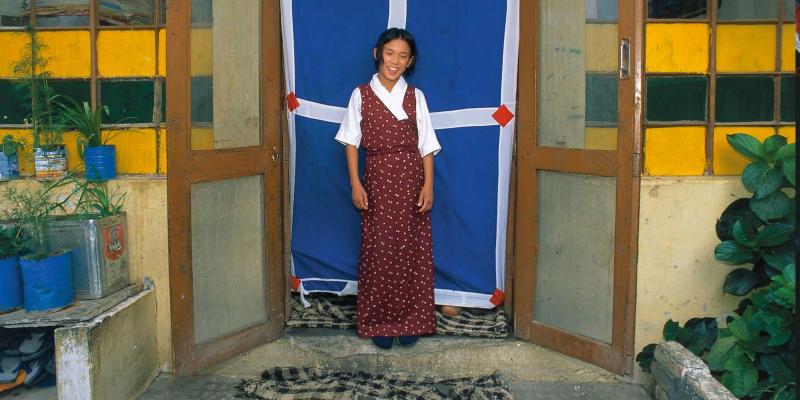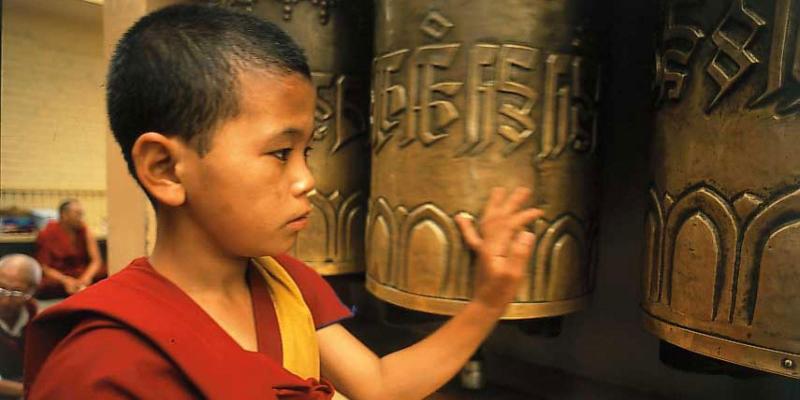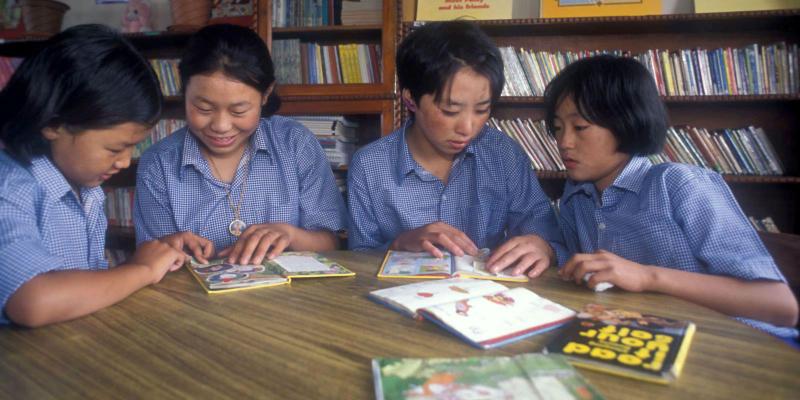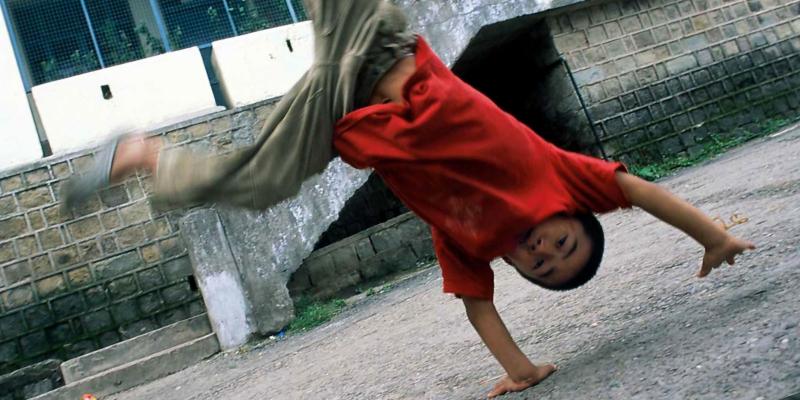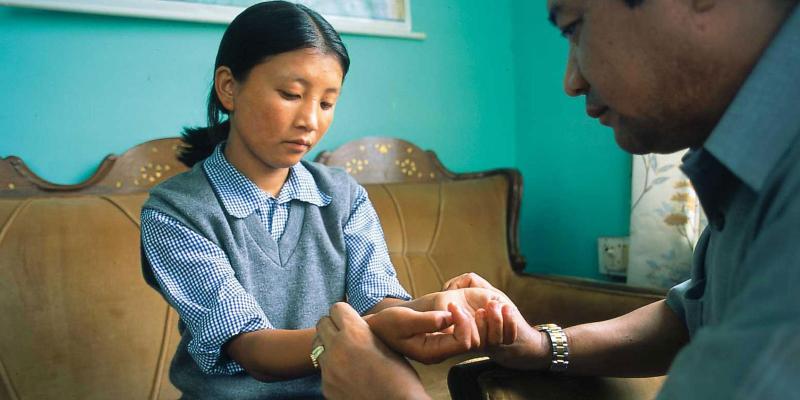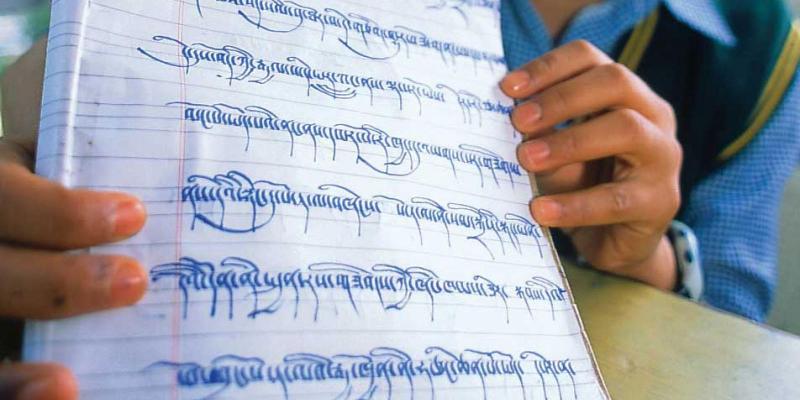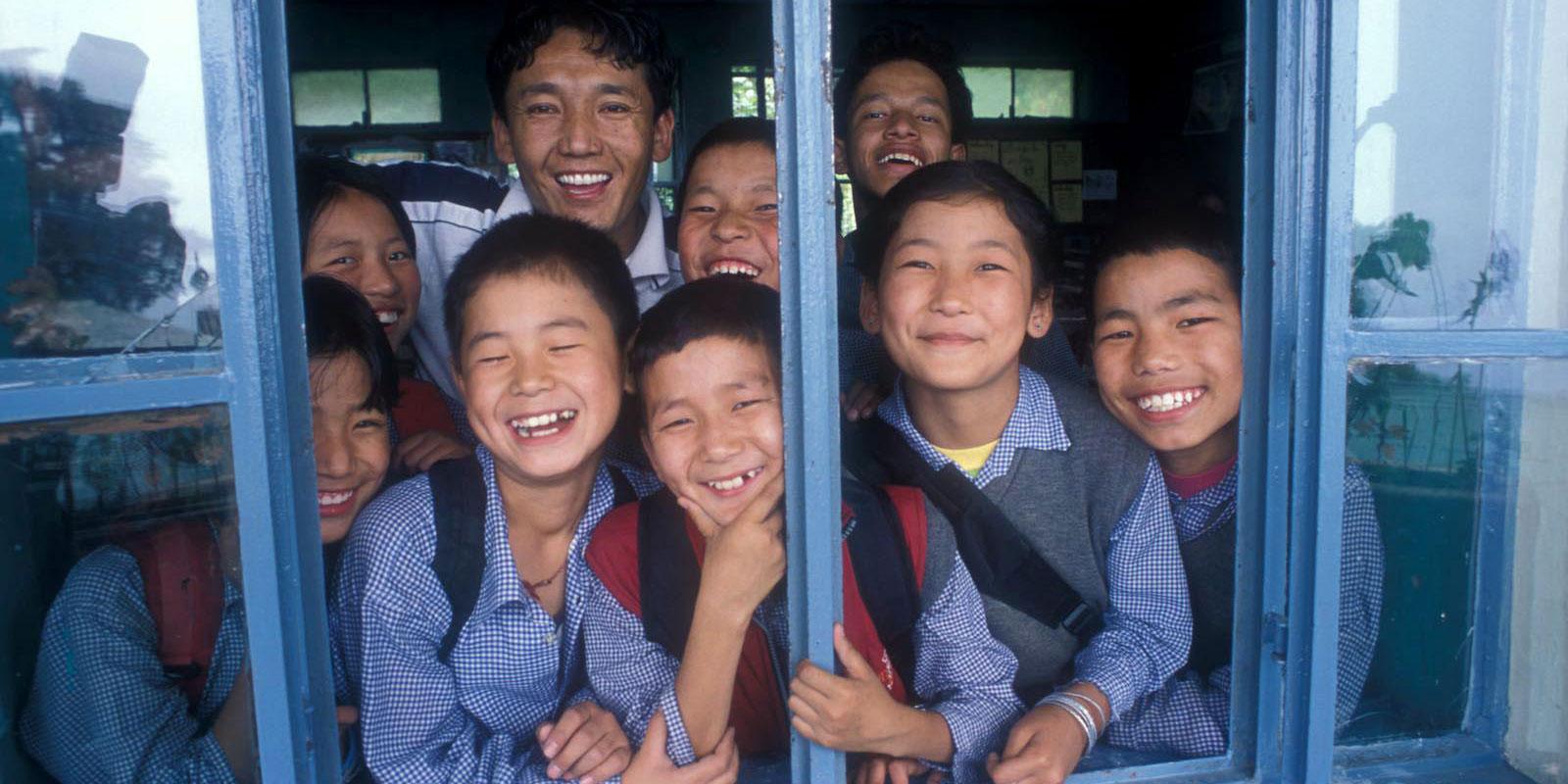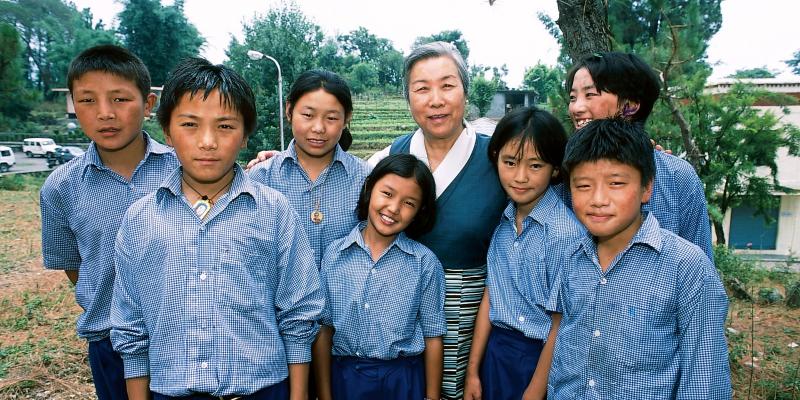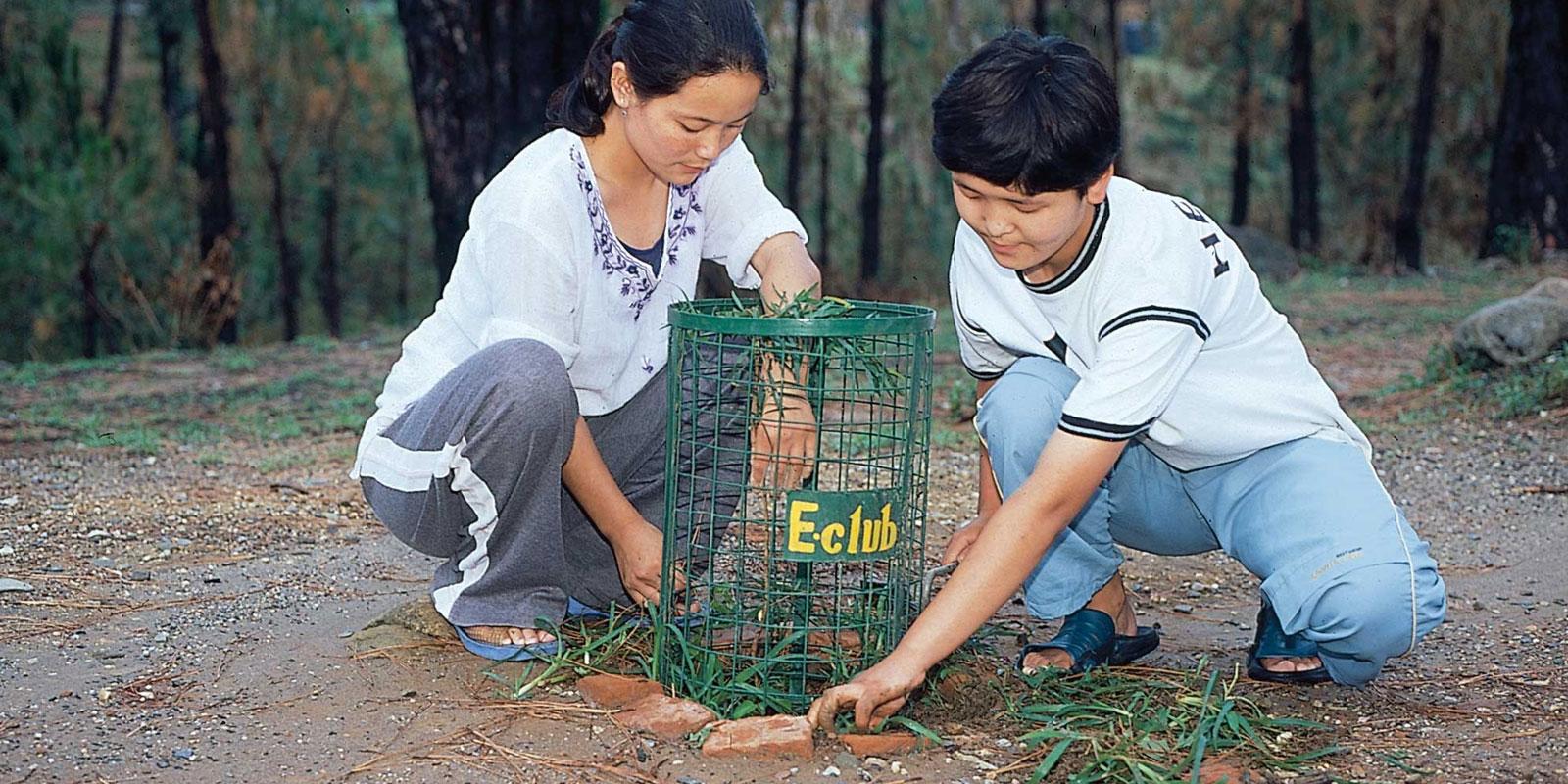
The slaughterhouse staff had never seen anything like it. Throughout India Tibetan children came and wanted to buy goats due for slaughter with their savings.
We saved two goats,” says Lobsang, 13. He is a member of the children’s village’s goat club in Gopalpur and helps to take care of the goat Tseten. “It’s fun and it reminds me of my home village in Tibet. We had goats there that I sometimes took care of,” says Lobsang.

The children’s villages have saved animals from slaughter for a year. They also try to not eat meat. Tibetans are meat eaters by tradition because it is difficult to grow vegetables and other things in the cold, dry homeland.

“But in Tibet we only eat those animals in order to survive,” says Lobsang. In the children’s village’s houses there are lots of ants, flies, spiders and beetles. Sometimes even scorpions! But there are neither fly swatters nor mousetraps. Not killing or using violence is an important part of Buddhism. It is called ahimsa. Tibetan children take time to save ants that have ended up in a puddle or earthworms that have ended up on the road. “If I see a scary spider at home I’m not allowed to kill it,” explains Lobsang. “I try to capture it and let it out in the grass instead.”
